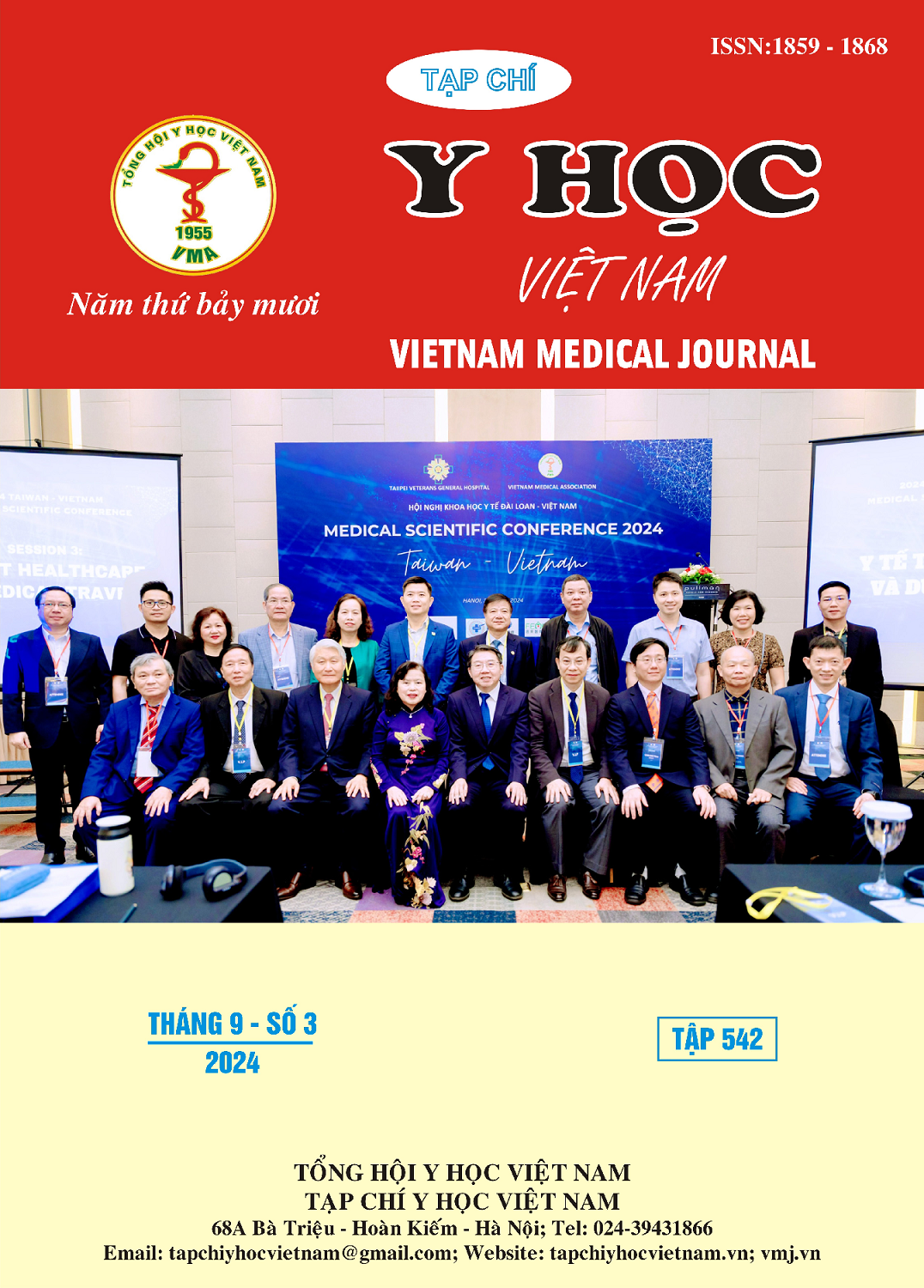RIGHT VENTRICULAR FUNCTION PARAMETERS ON ECHOCARDIOGRAPHY IN PATIENTS HAVING HEART FAILURE WITH REDUCED EJECTION FRACTION
Main Article Content
Abstract
Background: Heart failure is one of the leading causes of death and hospitalization in cardiovascular patients. Right ventricular dysfunction is commonly observed in patients having heart failure with reduced ejection fraction. Accurate assessment of right ventricular function is beneficial for risk evaluation and helps physicians choose optimal treatment methods to improve the outcome. Objectives: This study was conducted to describe right ventricular dysfunction by echocardiography in patients having heart failure with reduced ejection fraction. Methods: A descriptive cross-sectional study was conducted on 110 heart failure patients having reduced ejection fraction at the Cardiology Department of Cho Ray Hospital. Echocardiography was used to assess the prevalence of right ventricular dysfunction through three parameters: TAPSE, RVFAC, and RVs’. Results: The echocardiographic measurements showed that the mean values of TAPSE, RVFAC, and RVs’ were 17.4 ± 2.8 mm, 30.2 ± 13.2%, and 0.10 ± 0.03 m/s, respectively. The rates of abnormal TAPSE, RVFAC, and RVs’ were 35.5%, 64.6%, and 48.2%, respectively. Conclusion: Right ventricular dysfunction was significantly present in our study and requires further attention. The ability to detect right ventricular dysfunction varies considerably depending on the echocardiographic parameter used
Article Details
Keywords
Heart failure with reduced ejection fraction, right ventricular dysfunction, TAPSE, RVFAC, RVs’
References
2. Sciaccaluga C, D'Ascenzi F, Mandoli GE, et al. Traditional and Novel Imaging of Right Ventricular Function in Patients with Heart Failure and Reduced Ejection Fraction. Curr Heart Fail Rep. Apr 2020;17(2):28-33. doi:10.1007/s11897-020-00455-1
3. Iglesias-Garriz I, Olalla-Gómez C, Garrote C, et al. Contribution of right ventricular dysfunction to heart failure mortality: a meta-analysis. Rev Cardiovasc Med. 2012;13(2-3):e62-9. doi:10. 3909/ricm0602
4. Tadic M, Nita N, Schneider L, et al. The Predictive Value of Right Ventricular Longitudinal Strain in Pulmonary Hypertension, Heart Failure, and Valvular Diseases. Front Cardiovasc Med. 2021;8:698158. doi:10.3389/fcvm.2021.698158
5. Mitchell C, Rahko PS, Blauwet LA, et al. Guidelines for Performing a Comprehensive Transthoracic Echocardiographic Examination in Adults: Recommendations from the American Society of Echocardiography. J Am Soc Echocardiogr. 2019 Jan;32(1):1-64. doi: 10.1016/ j.echo.2018.06.004.
6. Konstam MA, Kiernan MS, Bernstein D, et al. Evaluation and Management of Right-Sided Heart Failure: A Scientific Statement From the American Heart Association. Circulation. May 15 2018; 137(20): e578-e622. doi:10.1161/ cir.0000000000000560
7. Motoki H, Borowski AG, Shrestha K, et al. Right ventricular global longitudinal strain provides prognostic value incremental to left ventricular ejection fraction in patients with heart failure. J Am Soc Echocardiogr. Jul 2014;27(7): 726-32. doi:10.1016/j.echo.2014.02.007
8. Lundorff IJ, Sengeløv M, Pedersen S, et al. Prognostic value of right ventricular echocardiographic measures in patients with heart failure with reduced ejection fraction. J Clin Ultrasound. Nov 2021;49(9):903-913. doi:10. 1002/ jcu.23050
9. Carluccio E, Biagioli P, Lauciello R, et al. Superior Prognostic Value of Right Ventricular Free Wall Compared to Global Longitudinal Strain in Patients With Heart Failure. J Am Soc Echocardiogr. Jul 2019;32(7):836-844.e1. doi:10. 1016/j.echo.2019.02.011
10. Houard L, Benaets MB, de Meester de Ravenstein C, et al. Additional Prognostic Value of 2D Right Ventricular Speckle-Tracking Strain for Prediction of Survival in Heart Failure and Reduced Ejection Fraction: A Comparative Study With Cardiac Magnetic Resonance. JACC Cardiovasc Imaging. Dec 2019;12(12):2373-2385. doi:10.1016/j.jcmg.2018.11.028


